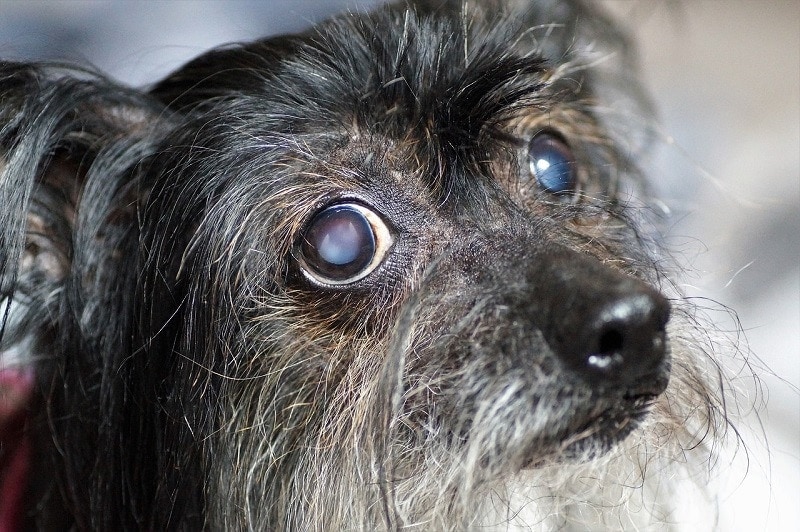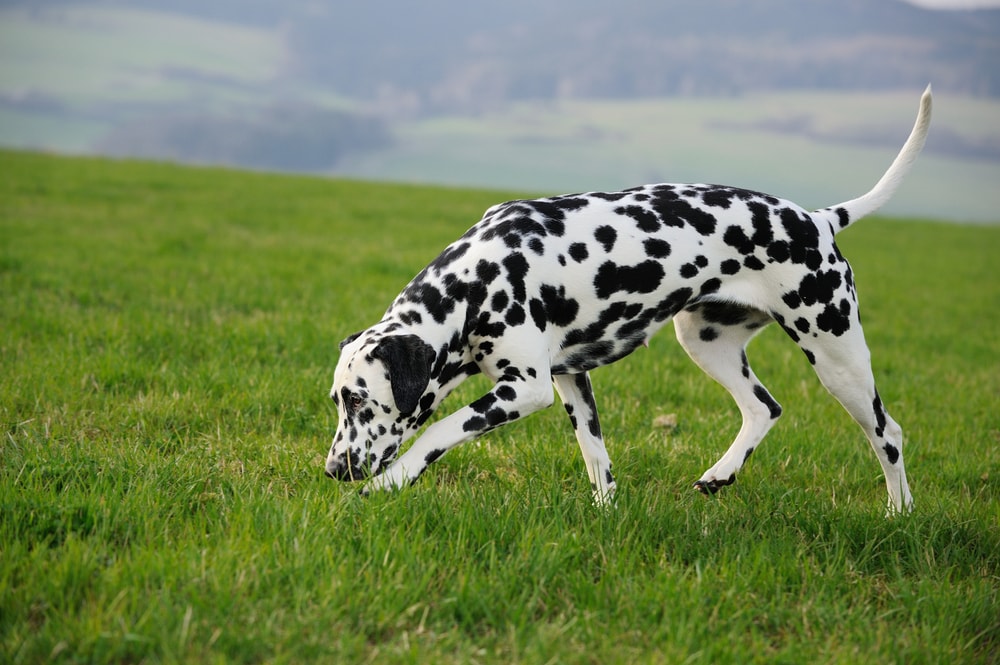Is Rawhide Bad for Dogs? Vet Approved Risks, Facts & Safety Guide
Updated on
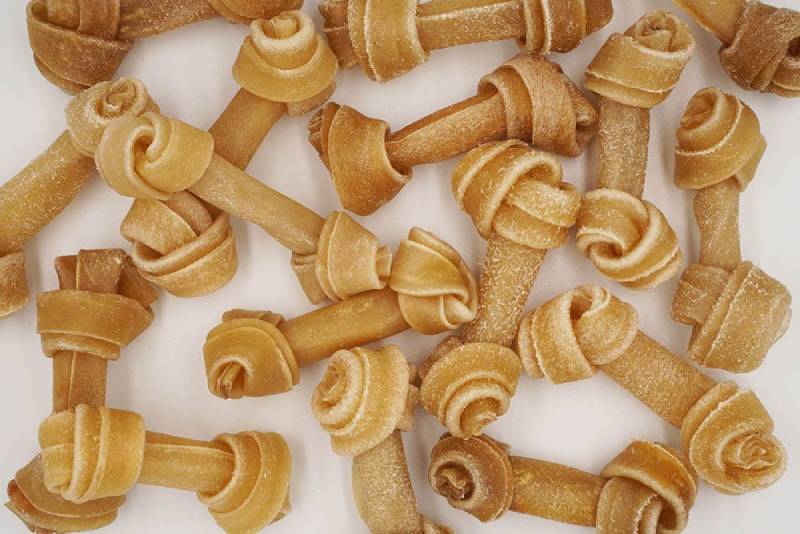
Rawhides have been a go-to chew for dogs for many years and were first touted for preventing the destruction of various household items like shoes and furniture while helping promote dental health. In recent years however, there’s been growing controversy surrounding the safety of rawhides, leading to lots of confusion among pet owners.
While there are still some conflicting opinions among experts, what we do know is that rawhides do come with some very serious risks and if they are offered, it should only be offered under strict supervision. In this article we’ll dig deeper into the risks associated with these ever so popular dog chews, what makes them dangerous, and guide you on how to keep your pooch as safe as possible.
Risks of Rawhide
Before offering anything to your dog, it’s a good idea to know and understand the risks. When it comes to rawhide, there are certainly some substantial concerns, so here’s an overview of what kind of problems can occur with rawhide consumption.
Choking Hazard
Since rawhide can break into small pieces and become soft, it can easily become stuck in the throat and pose a serious risk to your dog. The fact that most rawhide material becomes a mushier texture means it can mold to the shape of the throat, making it very difficult to dislodge.
Gastrointestinal Blockage
Rawhides and other edible dog chews pose a risk for gastrointestinal blockage. This is one of the most common and most serious risks associated with these chews. If your dog is to swallow a piece of rawhide large enough to get stuck within the gastrointestinal tract, it could easily become lodged and block the normal function of the digestive system.
Gastrointestinal blockages are considered a medical emergency and can be fatal if left untreated. Emergency surgery is often the needed treatment for this type of condition. It’s important to know the signs of a gastrointestinal blockage and never hesitate to reach out to your vet if you have concerns over something your dog has eaten.

Potential Chemicals and Contaminants
Because rawhides are not classified as food, they are not regulated by the FDA. This means that rawhides are at risk of being contaminated with various bacteria such as Salmonella or E. coli and could even contain traces of toxic chemicals that are used to treat the animal hide.
There are also companies that will use artificial colors and flavors to make the rawhide more visually appealing to consumers and enticing to dogs. In addition to that, various chemical preservatives are sometimes used to help the rawhide maintain freshness longer. There is a lot of controversy surrounding the uses of artificial colors, flavors, and preservatives due to the associated health concerns for both people and animals.
Tooth Damage
While rawhides can benefit dental health by helping your dog clean their teeth naturally as they chew, there is also a risk of tooth damage. Damaged or broken teeth can be very painful and may cause the dog to avoid eating hard kibbles and can even lead to infection. This is especially risky for seniors and those that suffer from dental problems to begin with.
Digestive Upset
Whether it’s from the ingredients in the rawhide or potential contaminants or chemicals, you do run the risk of digestive upset when allowing your dog to chew on rawhide. Even the most ethically sourced, natural rawhide products could lead to digestive upset that could result in diarrhea and/or vomiting.
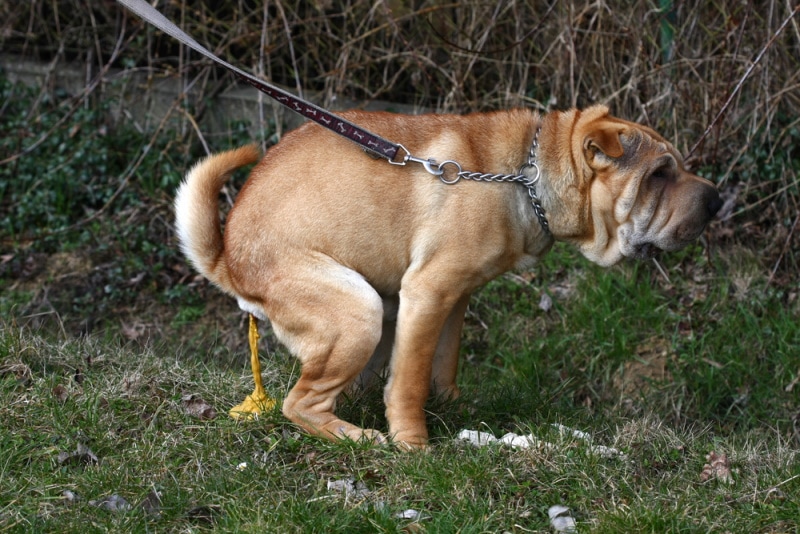
Safety Precautions for Rawhide
As with most chews, there are pros and cons to allowing your dog to gnaw on rawhide. You should always talk to your veterinarian before you give rawhide to your dog, but if you have decided to allow rawhide in your home, taking some safety precautions can help keep your pup as safe as possible.
Only Use High Quality Products
Check your list of ingredients and look into the manufacturing process when choosing a rawhide, that way you can ensure you are getting a high-quality product that is as safe as possible.
Rawhides made in the United States will have to meet more strict safety standards than those coming from other countries. This can help prevent bacterial contamination, but the United States does not regulate the uses of chemical contaminants so there are still risks.
Supervise Your Dog While Chewing
Never allow your dog to chew on rawhide unsupervised since close supervision is the only way to ensure your dog doesn’t choke or swallow pieces that could pose a risk of obstruction. You can also remove the rawhide once it has been eaten down small enough to be swallowed.
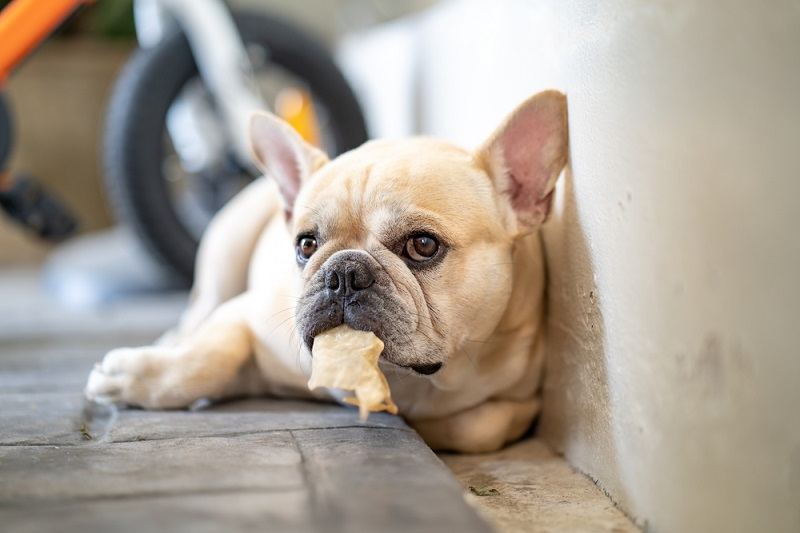
Know Your Dog’s Chewing Style
Different dogs will have different chewing styles, with some being soft chewers, some being super strong chewers, and everything in between. If your dog is a strong chewer that tends to obliterate chews in no time, you need to be super cautious about them biting off pieces that could pose a risk of choking or blockage. Rawhides are often much safer for softer chewers since they often don’t break them off into smaller pieces.
Only Use Size Appropriate Chews
You should only offer rawhide and other chews that are appropriate for your dog’s size. The manufacturer should list the desired size on the packaging, so be sure to check when shopping around. Buying the right sized chew is very important for your dog’s safety.
Discontinue Use If You Notice Any Problems
If you’ve offered your dog a rawhide and they are suddenly showing signs of gastrointestinal upset, discontinue use immediately. While some GI upset is not uncommon, you don’t want your dog to become sick. If signs of GI trouble persist after removing the rawhide, make sure to reach out to your veterinarian for further guidance.

Alternatives to Rawhide
If you’ve decided not to run the risk of offering rawhide, there are plenty of generally safe alternatives you can try. Keep in mind that these also come with certain risks, as does any chew, so it’s always best to practice safety precautions when allowing your dog to gnaw on anything.
Dental Chews
Dental chews are a great way to allow your dog to exhibit their natural chewing instinct while helping keep their teeth clean and promoting oral health. There are plenty of options for dental chews on the market, so don’t hesitate to look into the top picks if you are interested in offering these in place of rawhide.
Bully Sticks
Bully sticks are a favorite for many dogs and dog owners. Bully sticks are made of dried muscle, are durable, long-lasting, and are often free of chemical additives and preservatives. If you’ve never tried bully sticks before, be warned that they do have quite a strong smell.
Salmon Skin Bones
Bones made of salmon skin are a fantastic choice for dogs that suffer from food allergies or sensitivities to other protein sources and are great for skin and coat health. You must still be cautious of the risk of choking though and only offer them under supervision.
Carrots
Large carrots can make a nutritious alternative to rawhide if your dog needs to gnaw on something. They are great for those needing to cut down on calories and offer up a variety of vitamins and nutrients. Since they can also pose a choking hazard, be cautious and supervise your dog as they chew on the carrot.
Antlers
Deer and elk antlers are popular choices for chewing and dogs usually love them. However, many vets recommend avoiding antler chews as they are very hard and can damage teeth. They can also break or splinter causing dangerous internal blockages and damage. Elk antlers are known for being safer than deer antlers, but owners should supervise their dogs regardless if they choose to give their dog an antler chew.
Conclusion
While rawhides do have some benefits, they can pose some serious health risks for dogs. It’s important to understand the dangers that rawhide can pose and how to keep your dog as safe as possible if you prefer to use this type of chew. There are also plenty of alternatives for those that wish to avoid them altogether. Veterinarians and dog owners have conflicting opinions about the use of rawhides, so it’s always best to discuss the subject directly with your dog’s vet before offering them to your dog.
Featured Image Credit: Lek in a BIG WORLD, Shutterstock





